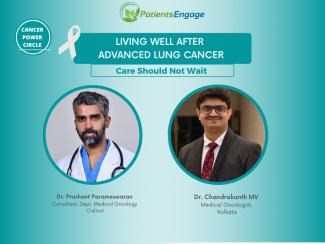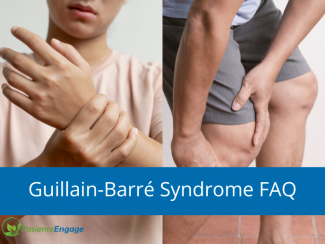
By Dr Raghuvirsinh Solanki, Consultant plastic and Oncoreconstructive Microsurgeon.
Are all breast cancer patients, who have had their breast removed, eligible for reconstruction?
All patients wishing to undergo breast reconstructive surgery are eligible for reconstruction provided medical fitness and stage of cancer allows it. We do not offer reconstruction in advanced stages usually as it delays adjuvant treatment.
What are the different types of reconstruction available? How does reconstruction take place?
Reconstruction depends on how much breast tissue is removed by the breast cancer surgeon. In cases where a small part of the breast is removed, reconstruction is done with surrounding local breast tissue (Oncoplasty) or from back skin and underlying muscle (Latissimus dorsi flap). Again, this will vary from cancer defect and availability of tissue in that particular patient.
Patients undergoing complete breast removal procedure (Mastectomy) are ideal for whole breast reconstruction and we offer two options to these patients:
1) Autologous reconstruction means the patient's own tissue is taken from the lower abdomen along with its blood vessels and we contour it like a breast, and blood vessels of that tissue are joined with local chest vessels under microscope. This is one kind of tissue transplant surgery (like kidney and liver transplant), which is technically difficult but gives good cosmetic results and better long-term outcomes. The patient will have tummy tuck scar, which remains hidden in undergarments.
2) The second option is implant-based reconstruction. In the first stage, a balloon is placed under the chest wall skin, which is inflated weekly with saline solution for few months so a space is created under the skin. In the second stage, an implant is placed in the space under the skin. In the long term, the cosmetic outcome is suboptimal to the autologous reconstruction.
What is the difference between implants and tissue transplant?
Implants are made up of silicone gel encompassed within its outer silicone shell. The size and shape varies, depending on the patients’ need and stature. There remains some risk of extrusion of implant, rupture and severe hardening of tissue around it over time. (Extrusion happens when the surrounding tissue cannot hold the implant and the implant becomes exposed). Again, implant-based reconstruction has more complications if the patient is going to receive radiation.
Autologous reconstruction has better immediate- and long-term outcomes and it sustains radiation better compared to implant-based reconstruction.
How many surgeries does it take?
In implant-based reconstruction, patients have to undergo at least two surgical procedures. In autologous reconstruction, the breast is reconstructed in the same session with mastectomy procedure. Again, nipple and areola requires one or two small OPD (out-patient) based procedures. We use tattoo for making the areola once the nipple is formed. In some patients, some contour correcting procedures are performed if required in forms of liposuction or minor surgical correction.
How long do the surgeries take?
In the autologous method, surgery lasts for 6 to 8 hours while implant-based method requires 1-2 hours the first time while placing the balloon (tissue expander) and another 2 hours after a few months when the balloon is replaced with the implant. Other minor surgeries like nipple creation or liposuction, if required, may need an hour or so.
How does one prepare for the surgery?
Any patient undergoing breast removal for cancer and wanting to go for reconstruction should consult their cancer surgeon and a plastic surgeon for their advice and to understand the procedure. You should also meet other patients who have undergone the procedure so you fully understand what to expect. Nowadays thanks to the Internet, you can get detailed information about breast reconstruction. Discuss this decision with your spouse or family members.
To family members, I would like to say: There is a dictum regarding cancer - Cancer is curable if detected early. So, instead of getting pulled down by the diagnosis, look beyond the treatment of breast cancer. Think of life after breast removal. How would she feel when she loses a breast and it is not reconstructed? Will she be able to lead a life with self-confidence?
What are the risks of the surgery?
Nowadays even such long surgeries are done routinely without any major complications unless the patient has a major medical problem. There are very small risks of flap edge necrosis (tissue death), complete flap failure or implant extrusion.
What will the breasts look like after the surgery?
In most of the patients, externally and within the undergarments, the breast looks almost the same and it is difficult to know that the patient has undergone removal of her breast for cancer. In the majority of patients due to ptosis (sagging) of breast with ageing, they require some form of reduction or tightening procedures (Mastopexy) on normal unaffected breast to achieve exact symmetry.
Will the reconstructed breast feel different?
Reconstructed breasts have no sensations so they don't feel like normal breasts. But in autologous reconstruction method, the breast is formed from the patients’ own tissue, so consistency would be normal compared to implant-based technique.
What is the recovery period?
Average recovery time ranges from 3 to 5 weeks. The patient can be mobilised from the 2nd day onwards and strenuous activities are restricted for 6 weeks.
What exercises/physiotherapy is needed post-surgery?
Routine shouder joint exercises are advised from 1st or 2nd post-operative days.
Can the patient develop lymphedema?
Nowadays only 3-5% of patients develop lymphedema of the upper limb and they are managed with exercises, manual drainage, compression bandages and upper limb elevation.
Will this surgery interfere with radiation or chemotherapy?
Breast reconstruction does not interfere with chemotherapy or radiation treatment except implant-based technique needs complete deflation of expander during radiation.
Will ageing, weight gain or loss affect the breast?
Yes with ageing and weight loss, normal breast undergoes some ptosis and minimal contour changes.
Do you need a yearly mammography after surgery/reconstruction?
Yes, once treated breast cancer patients need yearly monitoring with clinical examinations and mammography.
If breast cancer returns, what signs/symptoms should you look for?
In case of recurrence of breast cancer, any newly detected breast lump or skin irregularities or bloody discharge or any axillary or supraclavicular lumps should arouse a suspicion of some problematic things going on.
Does reconstruction increase the risk of recurrence of cancer?
No, reconstruction has no any relation with recurrence of breast cancer.
Does it make the cancer harder to detect?
Till now there is no evidence that breast reconstruction comes in the way of detection of recurrence. So it has actually nothing to do with recurrence. Also, in mastectomy procedure, if a cancer surgeon has removed the entire breast tissue properly, there wound not be any breast tissue left behind from which cancer arises.
Pros and cons of Breast reconstruction – what are the benefits beyond cosmetic advantages
Advantages
- Least psychological trauma (trauma of having flat chest without a breast, as the breast is one of the important female body parts, which defines femininity)
- Body image remains intact, which positively affects relationship with spouse.
- Tummy tuck as a trade off of autologous reconstruction, which also improves contour.
- Very low complications rate
Disadvantages
- Bit costly
- Many times insurance companies do not pass your insurance claim.
What is the best time to go for breast reconstruction - immediately after mastectomy or later?
The best time for reconstruction is immediate reconstruction as the patient does not have to undergo a 2nd surgery for reconstruction. The patient does not have to pass a single day without breast/flat chest so they undergo the least psychological trauma as body image remains intact, vessels to which we join the flap vessels are of normal condition and native tissue does not go in stage of postoperative fibrosis, so overall complications remain very low.
However any patient who wants to go for breast reconstruction, this procedure can be safely performed at any time, preferably at least one year after radiation treatment.
Any breast reconstruction myths that need to be cleared?
Myth - Many times patients are told that “these procedures are better done after 3 to 5 years as there are chances of recurrence during these time, so it is better to do reconstruction afterwards as risk reduces thereafter”. This is only an excuse to escape from a responsibility as most of the time these hospitals don't have any plastic surgeon, who reconstructs simultaneously.
Dr Raghuvirsinh Solanki,
M.S.,M.Ch.,(Plastic Surgery)
Consultant plastic and oncoreconstructive Microsurgeon,
HCG Cancer Centre,
Ahmedabad.






